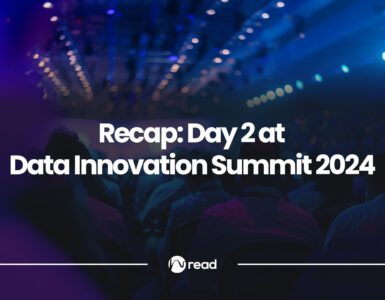AI has become the hottest buzzword of the decade, with ChatGPT — last year alone growing to 100,000,000 users within three months — the fastest growth in a new product ever. Since then, everyone, from startups to old-line businesses, has rushed to claim they are doing it.
It’s no wonder, as McKinsey’s report, “Mind the Gap: AI Leaders Pulling Ahead” has shown that companies adopting AI are growing faster than their competitors. For investors and finance, understanding whether a company uses AI properly now translates into wasting money or reaping rewards. So how can you tell whether a company is a poser or the real deal?


All AI projects start with people.
AI is complex to implement well, requiring companies to select a robust use case and carefully consider the consequences for a successful implementation. Let’s start by looking at some clear pretenders.
Rule 1: Avoid Overreliance on Vendor APIs
If a startup relies on openAI or Anthropic to power its backend, it may not have a genuine grasp of its technological direction. Entrusting their core operations to external platforms leaves them vulnerable, lacking control over their future trajectory. Moreover, while prominent vendors may offer seemingly attractive pricing, the startup risks becoming entangled in a dependency loop with little autonomy over its technological infrastructure. Given the fluid nature of AI development, relying on these platforms poses the additional challenge of uncertain long-term access. Hence, startups should exercise caution when seeking financing for or implementing services from such providers.
Rule 2: Ensure Proper Board Oversight
When evaluating a mainline company’s claim of adopting AI, scrutiny of its board of directors becomes paramount. Who on the board has the experience and knowledge about AI to ask the right questions? How is the risk being managed? Who is responsible for governance and compliance? Suppose all the board members have technology knowledge ten years out of date, or worse yet, little to no relevant technological understanding of AI. How do you know if a joint venture will enhance shareholder value? How do you know this company is properly controlling the risks and potential of AI?
Rule 3: The CEO Needs to Assemble a Cross-Functional AI Team
What is the CEO’s role in AI integration? Enabling AI enterprise-wide requires CEO leadership, not limited to one department. A well-coordinated effort across Finance, HR, Legal, Data Analytics and IT is essential. If IT adopts tools like Copilot from Microsoft as they are already using other Microsoft packages, considerations include user adoption, risks, data security, and alignment with business objectives. Is the AI strategy well- conceived to leverage its full potential?
Rule 4: The CEO Needs to Champion Targeted Use Cases
Identify CEOs who actively champion specific AI use cases within their organizations. Concrete examples of use cases not only drive efficiency and service improvement but also enable the development of new capabilities. A competent CEO should possess a thorough understanding of these use cases, beyond mere acknowledgment of generic AI adoption. While most companies stand to benefit from AI, the key lies in strategic applications. Finance teams should rigorously assess the financial viability of AI initiatives to ensure a favorable return on investment (ROI). Prioritize projects with well-defined goals that closely align with the organization’s overarching business objectives.
Rule 5: Start Focused vs Diffuse AI Adoption
Exercise caution when encountering companies attempting to integrate AI into every aspect of their operations without adequate experience. While technology-focused giants like Microsoft, Google, Amazon, and Meta can swiftly adopt AI due to their expertise, smaller companies like Acme Bolts should proceed with more discernment. While embracing AI is crucial for staying competitive to keep up or leapfrog its competitors, overzealous adoption without proper experience can lead to detrimental outcomes. These companies must prioritize gaining experience and proficiency in implementing and managing AI solutions effectively before attempting widespread integration.
Rule 6: Carefully Select External Partners
Has the company assembled the right team for implementing AI solutions? Given the complexity of AI, most companies lack the requisite expertise to implement it independently. Is the company selecting the right partners for collaboration? A comprehensive strategy will include various stakeholders, including data providers, technology experts, and compliance managers, to ensure a holistic approach to AI
integration.


In Conclusion
AI implementation revolves around people. The success of large-scale projects like this hinges on securing buy-in from stakeholders at every level. It’s crucial to meticulously plan the business cases, develop appropriate strategies and policies for AI usage, and establish robust governance, auditing, and risk management frameworks. All these critical steps require human input and careful consideration. Ensuring alignment within the entire C-Suite on key aspects of the AI program is essential for its effective execution.
Over the next 20 years, AI will revolutionize business even more profoundly than the internet did. Companies that fail to adapt to this paradigm shift will get crushed, or at best, risk being left behind as AI becomes integral to the workplace. Recognizing that AI solutions are not one-size-fits-all, but rather customized to each company’s unique needs is paramount. Organizations need to be aware of the opportunities and risks presented by AI. They must cultivate the ability to assess proposed AI implementations critically and understand their impact on company productivity and employee efficiency, as well as market valuations. With AI set to permeate every sector, it is imperative to embrace AI now to remain competitive in the future.
About the Author


At smartR AI, Oliver King-Smith spearheads innovative patent applications harnessing AI for societal impact, including advancements in health tracking, support for vulnerable populations, and resource optimization. Their alertR invention aims to enhance independence and quality of life. Throughout his career, Oliver has been dedicated to developing cutting-edge technology to address challenges. As a serial entrepreneur, he has founded three companies and contributed to two successful exits. Recognized as “Best Global Life Science AI Solutions Provider – UK 2022” by Corporate Vision and “AI Solutions Provider of the Year 2023” by Corporate Livewire, smartR AI, under Oliver’s leadership, has grown to over 20 team members, focusing on integrating sensors and AI to tackle emerging challenges.
Oliver holds a PhD in Mathematics from UC Berkeley and an executive MBA from Stanford. He’s a seasoned innovator with expertise in Data Visualization, Statistics, Machine Vision, Robotics, and AI, earning four patents in the process. Notable achievements include leading R&D teams for award-winning software packages like Family Tree Maker and SigmaPlot. Oliver’s entrepreneurial spirit extends to supporting startups and serving on the Board of Directors for Eco-Panels and Elemental Breath. In his spare time, he develops his own AI Fintech engine.
For the newest insights in the world of data and AI, subscribe to Hyperight Premium. Stay ahead of the curve with exclusive content that will deepen your understanding of the evolving data landscape.














Add comment